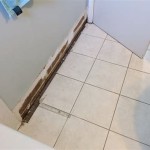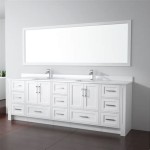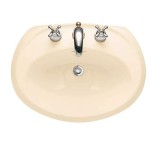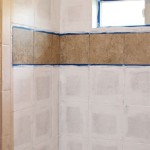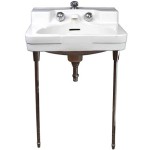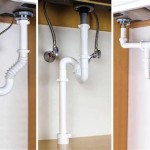Top Quality Bathroom Vanity Units: A Comprehensive Guide
The bathroom vanity unit serves as a cornerstone of any well-designed bathroom, offering functionality, storage, and aesthetic appeal. Selecting a top-quality vanity unit is a crucial decision, impacting not only the bathroom's appearance but also its long-term utility and value. This article delves into the key considerations when choosing a high-quality bathroom vanity, highlighting the importance of materials, construction, style, and installation.
Understanding the Importance of Quality Materials
The longevity and resilience of a bathroom vanity are directly linked to the quality of the materials used in its construction. Opting for inferior materials can lead to premature wear and tear, requiring frequent replacements and ultimately costing more in the long run. Therefore, understanding the properties and benefits of various materials is paramount.
Solid Wood: Solid wood vanities, particularly those made from hardwoods like oak, maple, or cherry, are renowned for their durability and timeless appeal. Solid wood resists warping and cracking better than other materials, especially when properly treated and sealed. However, solid wood is susceptible to moisture damage if not properly finished and sealed, so ensuring a high-quality sealant is critical. The visual warmth and natural grain patterns inherent in solid wood add a touch of elegance to any bathroom.
Plywood: Plywood is an engineered wood product consisting of multiple layers of wood veneer glued together. High-quality plywood is exceptionally strong and stable, making it an excellent choice for vanity construction. It resists warping, cracking, and shrinking, making it more stable than solid wood in humid bathroom environments. Look for plywood vanities with a CARB (California Air Resources Board) rating for low formaldehyde emissions to ensure a healthier indoor environment.
MDF (Medium-Density Fiberboard): MDF is another engineered wood product made from wood fibers combined with resin and pressed into a dense board. While MDF is more affordable than solid wood or plywood, its resistance to moisture damage is lower. Therefore, MDF vanities should only be considered for well-ventilated bathrooms where humidity levels are carefully controlled. High-quality MDF vanities will have a durable, water-resistant finish or laminate to protect the core material.
Vanity Tops: The vanity top is a critical element, as it is directly exposed to water and daily use. Common materials for vanity tops include:
- Granite: A natural stone known for its durability, heat resistance, and unique aesthetic appeal. Granite requires sealing to prevent staining, but with proper care, it can last for decades.
- Quartz: An engineered stone that is extremely durable, non-porous, and resistant to stains and scratches. Quartz is available in a wide range of colors and patterns, offering versatility in design.
- Marble: A luxurious natural stone prized for its elegant veining and sophisticated appearance. Marble is more porous than granite or quartz and requires more diligent maintenance to prevent staining.
- Solid Surface: An acrylic-based material that is seamless, non-porous, and easy to repair. Solid surface is available in a variety of colors and patterns and offers a smooth, hygienic surface.
- Laminate: A more affordable option consisting of a thin layer of decorative plastic bonded to a core material. Laminate is available in a wide range of colors and patterns, but it is less durable than other options and can be susceptible to scratches and chips.
The choice of vanity top material should be guided by both aesthetic preferences and practical considerations, such as durability, maintenance requirements, and budget constraints.
Examining Construction Quality and Features
Beyond materials, the quality of construction plays a vital role in determining the overall durability and functionality of a bathroom vanity. Attention to detail and robust construction techniques are hallmarks of a top-quality unit.
Joinery: The way the various components of the vanity are joined together is a critical indicator of its overall strength. Dovetail joints, where interlocking pins and tails create a strong and secure connection, are considered the gold standard for drawer construction. Mortise and tenon joints, where a projecting tenon fits snugly into a corresponding mortise, are commonly used for cabinet frames. These types of joints offer superior strength and stability compared to simpler methods like butt joints that are simply glued or screwed together.
Hardware: High-quality hinges, drawer slides, and knobs are essential for smooth and reliable operation. Soft-close hinges prevent doors from slamming shut, reducing noise and minimizing wear and tear. Full-extension drawer slides allow access to the entire contents of the drawer, maximizing storage space and convenience. Look for hardware made from solid brass, stainless steel, or other durable materials that resist corrosion in a humid bathroom environment. Undermount drawer slides offer a clean, minimalist look and prevent the slides from being visible.
Finish: The finish on a bathroom vanity protects the underlying material from moisture and wear, while also enhancing its aesthetic appeal. Multi-layered finishes, consisting of a primer, several coats of paint or stain, and a protective topcoat, provide superior durability and resistance to scratches and water damage. Ensure that the finish is applied evenly and smoothly, without any drips, runs, or imperfections. Catalyzed finishes, which involve the use of a catalyst to harden the finish, offer enhanced durability and chemical resistance.
Storage Solutions: A well-designed vanity incorporates clever storage solutions to maximize space and organization. Features like adjustable shelves, pull-out drawers, and integrated organizers can help keep bathroom essentials neatly stored and easily accessible. Consider the specific storage needs of the bathroom and choose a vanity with features that address those needs effectively. Some vanities include built-in electrical outlets and USB ports for charging electronic devices.
Selecting the Right Style and Design
The style and design of a bathroom vanity should complement the overall aesthetic of the bathroom and reflect the homeowner's personal preferences. A wide range of styles is available, from traditional and classic to modern and contemporary, each with its own unique characteristics and appeal.
Traditional Vanities: Traditional vanities often feature ornate details, raised panel doors, and decorative hardware. These vanities are typically made from solid wood and finished in rich, warm tones. Traditional vanities evoke a sense of timeless elegance and sophistication.
Modern Vanities: Modern vanities are characterized by clean lines, simple shapes, and minimalist design. These vanities often feature sleek surfaces, handle-free doors and drawers, and contemporary finishes like matte black or brushed nickel. Modern vanities create a sense of spaciousness and uncluttered elegance.
Contemporary Vanities: Contemporary vanities blend elements of both traditional and modern styles, offering a versatile and adaptable aesthetic. These vanities may feature a mix of materials, colors, and textures, creating a visually interesting and dynamic look. Contemporary vanities allow for greater personalization and customization.
Floating Vanities: Floating vanities are mounted to the wall, creating a sense of lightness and spaciousness. These vanities are particularly well-suited for smaller bathrooms, as they free up floor space and make the bathroom feel larger. Floating vanities are available in a variety of styles, from minimalist modern to more ornate traditional designs.
Double Vanities: Double vanities feature two sinks and ample countertop space, making them ideal for shared bathrooms. Double vanities provide separate spaces for two people to get ready simultaneously, eliminating morning congestion and promoting a more harmonious bathroom experience.
When selecting a vanity style, consider the size and layout of the bathroom, the existing architectural details, and the overall desired aesthetic. A well-chosen vanity can serve as a focal point for the bathroom, adding visual interest and enhancing its overall appeal.
Beyond the aesthetic, ensuring proper dimensions is paramount. Measure the available space accurately, accounting for door swings, plumbing locations, and clearances around fixtures. Choose a vanity size that fits comfortably within the space without overcrowding it or obstructing movement. Consider the height of the vanity, ensuring it is comfortable to use for all members of the household.
In conclusion, selecting a top-quality bathroom vanity involves careful consideration of materials, construction, and style. By focusing on these key aspects, homeowners can choose a vanity that not only enhances the aesthetic appeal of their bathroom but also provides lasting functionality and value.

Luxury Vanity Units Parker Howley Co Bespoke Furniture

Vanity Units Standing Or Wall Mounted Duravit

Atlanta Bathrooms Creating For Generations

Bathroom Vanity Units Bella Bathrooms

Vanity Units Bathroom Sink Cabinets Drench

600mm Wood Effect Wall Hung Countertop Vanity Unit With Basin Roxbi Better Bathrooms

Sonix Bathroom Furniture Vanity Suite Grey Buy At City

Bathroom Vanity Styles To Fit Your Space Forbes Home

Top Quality Solid Wood Double Sinks Grey Bathroom Cabinet Units China Vanity For Bathrooms Towel Made In Com

1500mm Bathroom Vanities Storage Bathware Direct
